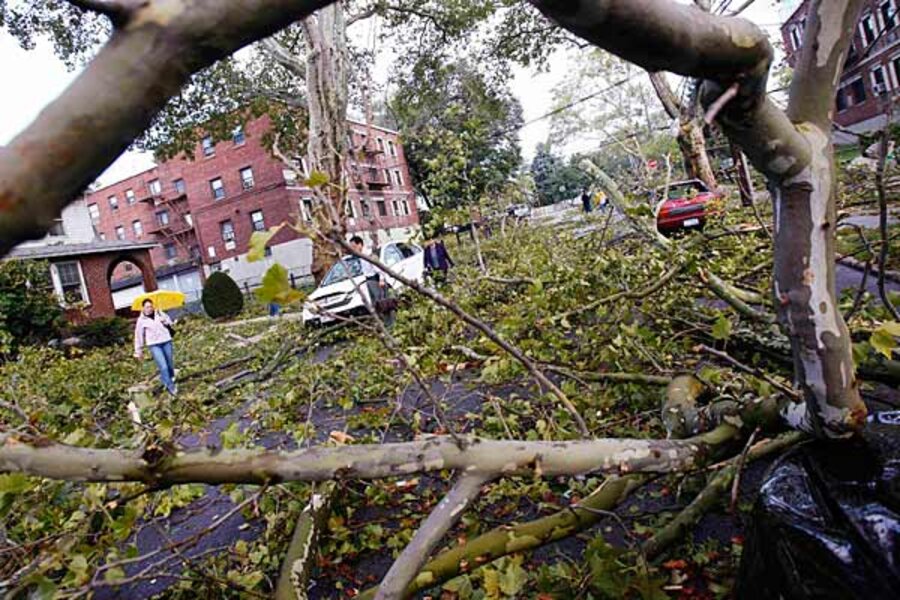A New York tornado? Brooklyn, Queens not exempt from major storms.
Loading...
| New York
New York has Shubert Alley in the theater district, MacDougal Alley where Jackson Pollock lived in Greenwich Village, and even an occasional bowling alley.
But, who would have thought New York would be this year’s Tornado Alley?
Yes, tornadoes, as in the storm that picked up twelve year-old Dorothy Gale and transported her and some dog named Toto to a strange village. But, wait, that was rural Kansas, where tornadoes are supposed to happen. New Yorkers only expect to see them on Broadway sets while people are singing and dancing.
Wrong.
On Friday, New York was trying to clean up the mess after a wind storm roared through Queens, Brooklyn, and Staten Island, blowing off roofs, downing trees, knocking out power lines, and causing one fatality. Although it’s not clear yet whether it was an actual tornado, meteorologists found one part of the deadly storm with 109 mile per hour winds.
Earlier this summer, on July 25th, a tornado roared through the Bronx, causing damage and injuring people.
“It’s a myth that cities cannot be hit with tornadoes and damaging winds,” says Henry Margusity, senior meteorologist and severe weather expert at AccuWeather.com in State College, Pa. “So far this year, New York has been hit more than the Midwest cities.”
Mr. Margusity says tornadoes, which are complex weather events, are formed when a thunderstorm starts to rotate, then gets hit with wind sheer in the atmosphere and picks up energy from the jet stream. If the humidity is right and the temperature is right, the thunderstorm structure starts to spin all the way down to the surface.
All those elements converged Thursday when a storm system that had caused tornadoes in Kansas and Ohio accelerated into the east. It picked up humidity that was funneling up through New Jersey. At the same time, a cold front was racing towards New York, providing energy. Add in a jet stream that was ripping over New York in the upper atmosphere.
“All the ingredients came together all at once,” says Margusity who notes this year there have been severe wind storms and tornadoes from Washington to Boston.
Even the skyscrapers in a city won’t make any difference to a tornado once the system starts spinning, says Margusity. “There could be some disruption of the tornado going through the city, but bear in mind a tornado can be a mile wide and the thunderstorm can go up 40,000 feet into the atmosphere, so the buildings are small in magnitude compared to the weather,” he says. “The wind can be funneled around buildings and it becomes even faster.”
New York and other cities may have been hit with tornadoes in the past, but weathermen did not have the technology to see them, Margusity says. “Now with all this new radar technology, we’re seeing things that we couldn’t see 20 years ago.”
In fact, he expects the new “storm chasers” will be urbanites hanging out their apartment windows with cell phones taking photos of the tornadoes.
“We will watch it on the internet from the time it develops until the time it hits,” he says. “It will become a regular part of our day like car chases in California.”





